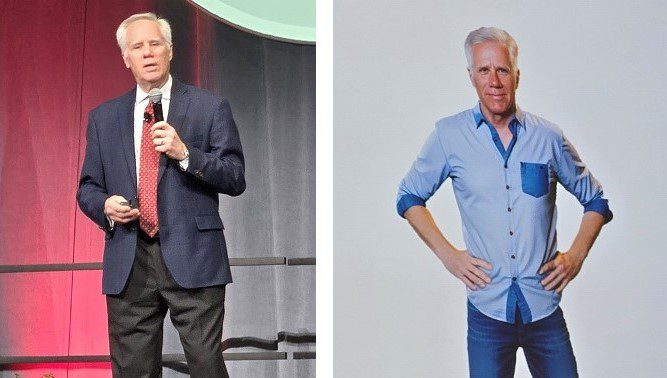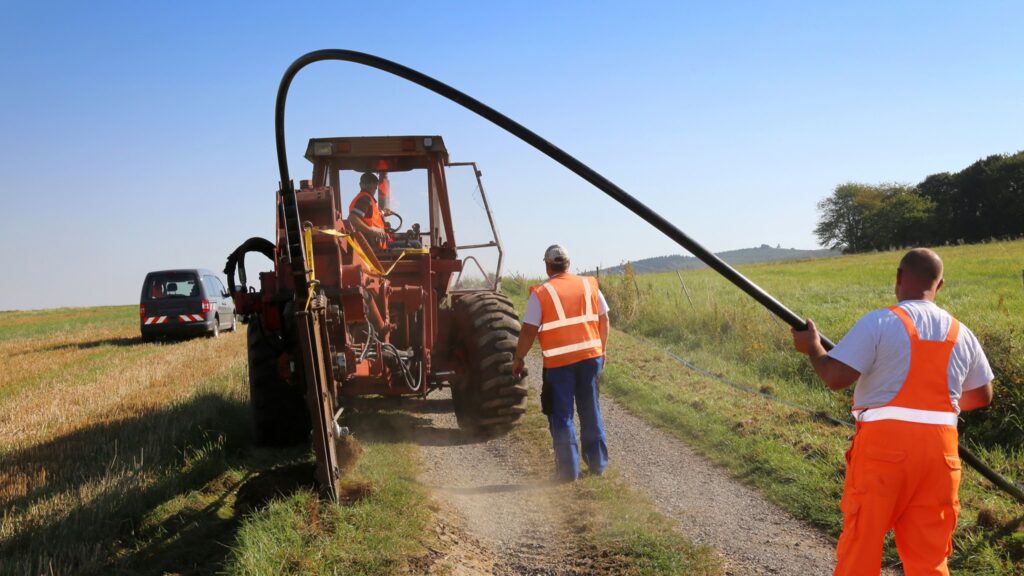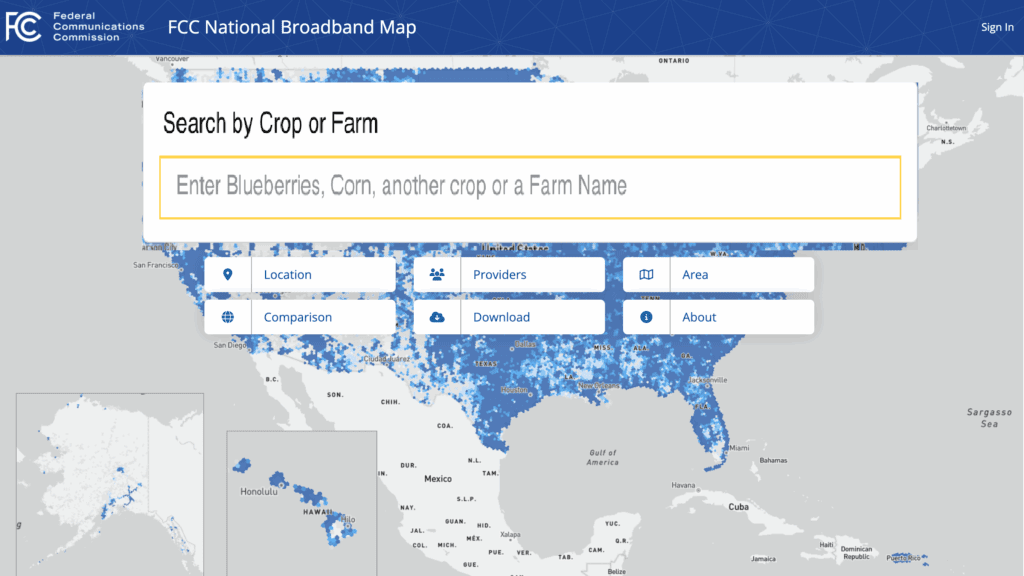Annual Meeting Themes: Increased Competition and Possible AI Futures
Randy Sukow
|

Among the speakers who held everyone’s attention at the NRTC annual meeting for electric cooperative members in San Antonio on Sunday were NRTC CEO Tim Bryan and the AI-generated Timbot.
If the lack of broadband in rural areas has been the problem, NRTC’s members have been a big part of the solution. Electric and telephone companies often were the first to serve areas where larger, national companies saw no opportunity. But times are changing and NRTC members know that they must plan for broadband competition. Speakers at the NRTC Annual Meeting could point to a long list of NRTC products and services that help members face any competitor that could emerge.
NRTC held the meeting in two parts, first on Feb. 13 in Tampa in conjunction with the NTCA RTIME meeting, and the second part on March 3 in San Antonio in conjunction with NRECA’s PowerXchange/TechAdvantage.
The annual meeting for electric members also included some whimsical moments. Greg Santoro, NRTC’s senior VP and Chief Marketing & Strategy Officer, led an artificial intelligence (AI) technology demonstration and unveiled “Timbot,” a virtual CEO.
Before that demo, reality CEO Tim Bryan discussed how NRTC can help members through a heating rural competitive environment. “Bottom line, what are we here to do? We’re here to help you succeed. That’s what NRTC really is all about if you look at the depth and breadth of our solutions,” he said.
Large wireless carriers and cable multiple systems operators (MSOs) in recent years have been challenging each other in urban areas. MSOs have bundled TV/broadband service with mobile voice and data service through mobile virtual network operator (MVNO) deals with the large cellular carriers. One MSO, Comcast, has acquired spectrum and begun launching wireless service of its own.
At the same time, mobile carriers including AT&T and Verizon have been using their 5G mobile networks to offer fixed wireless broadband packages. Industry research shows that fixed broadband bundled with mobile is growing in popularity, and rural areas is where they hope to find additional growth.
“Rural broadband is attracting a ton of interest outside of rural,” Bryan said. “Mobile operators. Cable operators. Private equity. It’s hard to believe the kinds of returns private equity can make in rural America, but private equity borrows billions to bring new broadband internet.”
As NRTC’s recently published Rural Broadband Operations Benchmarking Report shows, rural internet providers are faring well with the growing competition so far. NRTC members are experiencing 1 percent churn rates and 50 percent take rates on average. At the same time, 64 percent of survey respondents reported that they already face competitors offering fixed broadband at 100/20 Mbps.
The best way for rural providers to face new competitive conditions is to work together, said NRTC Board Chairman Jimmy Todd of Nex-Tech in Kansas. “This environment in which we operate – often stimulating, sometimes frightening – requires a new way of thinking. And it makes partnerships and allies more and more essential,” he said.
“The demands for bandwidth are going up exponentially every year for broadband,” Bryan said, referring to huge increases in streaming video and other data-intensive uses. “And I’m telling you, it’s coming on the smart grid side. Whether it’s meter reading, thermostatic programs, or managing a variety of loads, like electric vehicles. There is same demand for bandwidth on the electric side. Anyone building a smart grid network today should pay attention to these demands.”
NRTC wants to be at the center of many alliances. Bryan pointed to the ways that NRTC can help members meet the future. For example,
- NRTC Broadband Solutions is prepared to evaluate current competitive conditions; design a network plan to fit the situation; help members obtain financing to fund the network and assemble and manage teams to build it.
- NRTC Smart Grid Solutions designs and builds networks as well. Many electric cooperatives with no intentions of entering the commercial broadband business are building fiber and other communications systems to support smart grid applications, solar and storage facilities and microgrids. NRTC can assist with funding those projects as well.
- NRTC Mobile Solutions is prepared to help telco and electric member build a broadband/mobile bundles to counter potential competition from Comcast, AT&T, Verizon and all other competitors.
- NRTC’s Pivot and CrowdFiber have the tools to do the research and marketing to reach rural communities.
- NRTC Managed Services can help monitor network operations, deploy cybersecurity protection and maintain customer service standards that rural consumers value and that regularly beat the competitors.
The meeting moved to the AI demonstration, where Santoro noted that NRTC has been using elements of AI in its technology for many years, but that currently “it is moving at a pace that we’ve never seen,” which is sparking the public’s imagination. When OpenAI’s ChatGPT bot opened in November 2022, it took just five days for it to attract a million users, Santoro said.
NRTC built Timbot as an experiment, he said. It used several different AI applications, including a bot generator and voice and image generators, to create a realistic facsimile of Tim Bryan. They also used an application that takes existing photos and reimagines them, placing the figure in any setting, wearing any different clothing and adjusting to any age.
Santoro asked the Timbot a series of questions about NRTC and its mission. The program returned solid answers in Tim Bryan’s voice. He asked the program to tell jokes and write a poem about hockey. Timbot responded to both requests, within seconds (although some said the joke was “cheesy”).
He said that NRTC has identified 70 possible use cases where it could apply AI technology to benefit its members.
During the business portion of the meeting, Bryan shared the preliminary results of a successful 2023. NRTC took in total revenues of $287 million with a gross margin of $84 million. Current total equity is $196 million and member equity increased by $26 million over the year.
There were no surprises among the board election results. During the Tampa meeting, NRTC announced that Secretary-Treasurer Dustin Durden of Pineland Telephone Cooperative in Georgia, won reelection to a three-year term. In San Antonio, it announced that Vice Chairman Lynn Hodges of Ralls County Electric Cooperative in Missouri; Mike Malandro of Choptank Electric Cooperative in Maryland; Chris Seubert of Lane Electric Cooperative in Oregon, and Bryan Lightfoot of Bartlett Electric Cooperative in Texas each won reelection.


